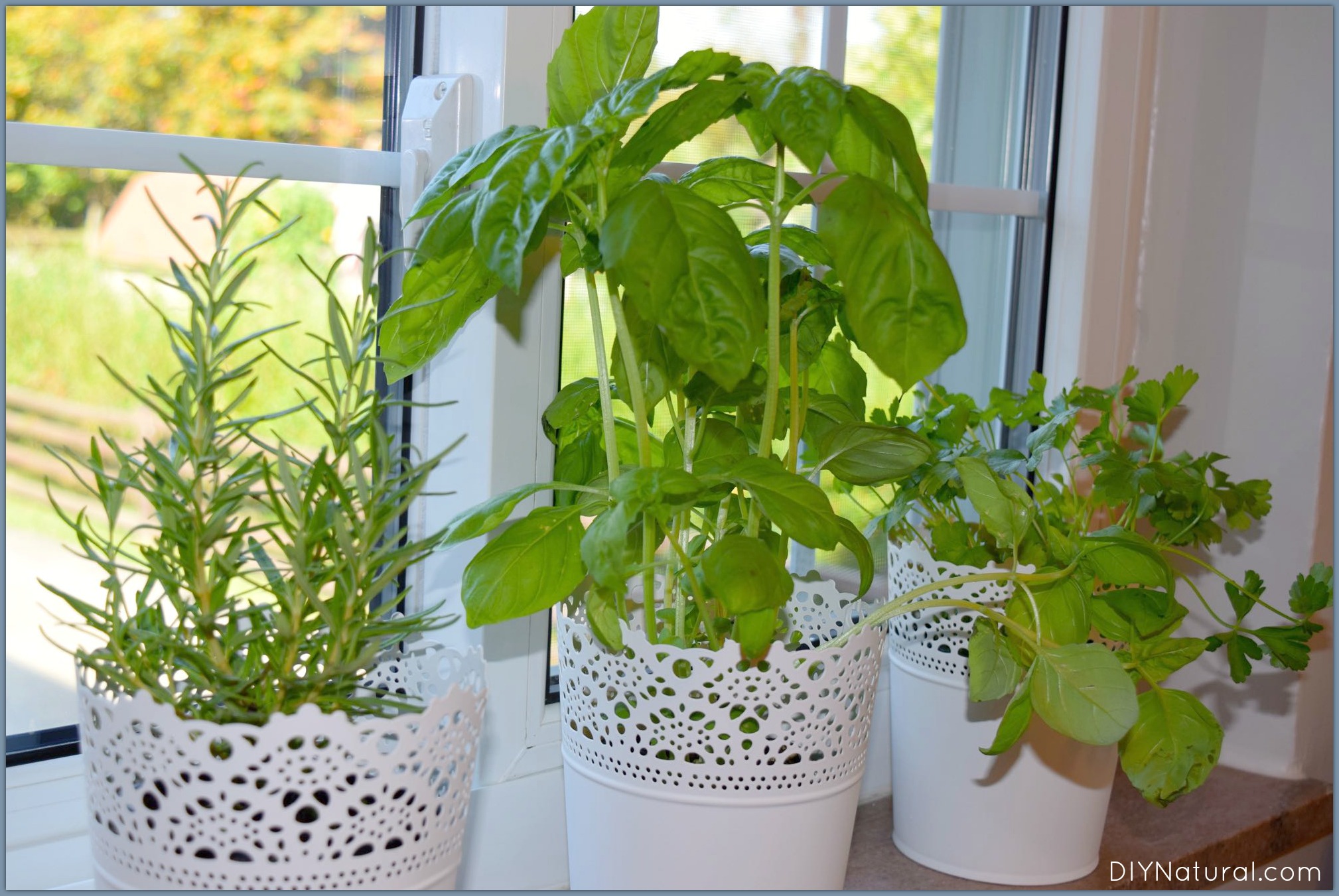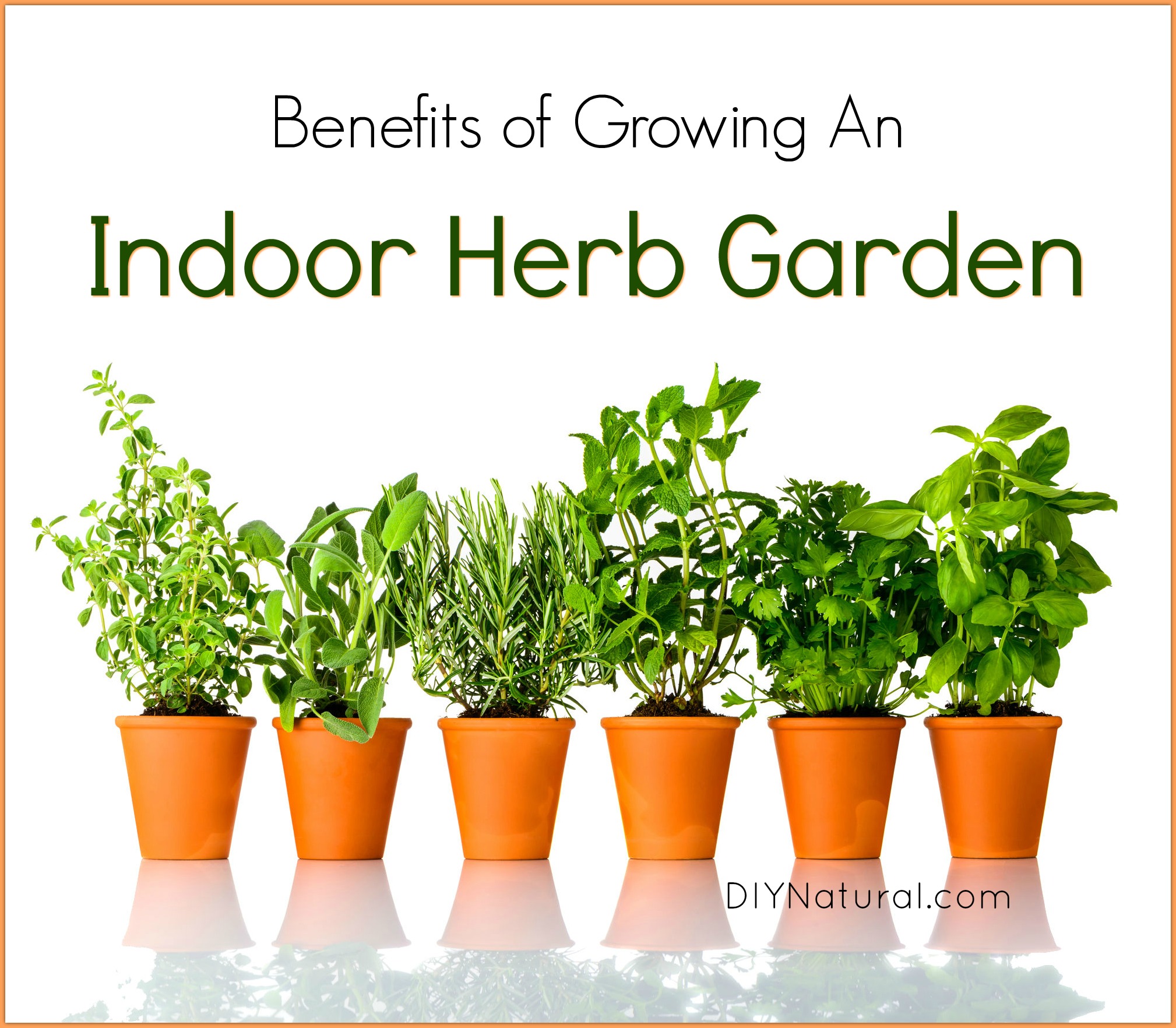
I LOVE my indoor herb garden! Once planted and placed in my window, they have grown great. I’m excited to watch them and use them in meals, all winter long!
Note: you may also like learning about growing herbs in water indoors.
Indoor Herb Garden
I’ve wanted to start my own indoor herb garden for years. Time, inexperience, and lack of opportunity prevented me from trying.
However, a few weeks ago I was at my local health food store and found organic, non-GMO herbs. I had to buy them!
I brought them home, planted them, and placed them in my kitchen windowsill. They have been growing prolifically ever since. It is easy to grow an indoor herb garden after all!
Growing herbs indoors has so many benefits to overall health. In this post, I’ll explain a few of those reasons.
Reasons to Have an Indoor Herb Garden
It’s Affordable
I bought three herb plants for just under $10! That will supply fresh herbs for my recipes for quite some time. Plus, it’s nearly that much to buy two bundles of fresh, organic, cut herbs from my grocery store.
These herbs are growing at a moderate pace and are quite hardy, so I can see them being enough for weekly use. If you use more fresh herbs, you can always buy two plants – still, very cost effective.
It’s Simple
I have never been good at keeping indoor plants alive. However, the herbs in my indoor herb garden are easy to keep alive. I water them when the soil is dry, keep them in my sunny kitchen window, and they seem to be doing very well! I plan to add a little organic fertilizer in a few months to keep them happy, but that’s about all the maintenance it takes.
These plants have also become a project for my oldest (only three years old). He loves watering the plants and smelling their wonderful aromas.
It’s Healthy
Growing and using your indoor herb garden is much healthier than buying dried herbs from the store. Note: Just make sure your herb plants are organic, non-GMO, and not treated with pesticides. Many US herb and spice manufacturers in the US fumigate what they grow with harmful chemicals. They even “irradiate” some herbs; meaning radiation is used to eliminate bacteria but actually can change the chemical makeup of the herb. (Read more about what’s in conventional herbs here.)
By growing your own herbs you will know exactly what is in them. You can even dry herbs and store them for a few months to use when dried herbs are preferred. This is also an excellent way to trim down plants that are getting overgrown.
Herbs Are Delicious
I cannot tell you how much better our food is when we use fresh herbs. The smell is just amazing too! Old favorite recipes really come to life when using fresh herbs.
Just a few days ago I made a roast using fresh rosemary sprigs and the flavor was on point. Of course, there are times when you need dry herbs for recipes, but I substitute fresh whenever I can and we really do notice the difference.
An Indoor Herb Garden is Good For Your Home
These herb plants are one of my favorite household decoration items. Beautiful, functional, and they smell amazing too! Having something green in my home lifts my spirits and gives me a boost. Plus having plants in your home is good to filter the air. While a DIY succulent garden helps to purify the air in your home, so does an indoor herb garden! Rosemary is considered part of the evergreen family which is well known for being great air purifiers! Basil and parsley are also easily grown indoors and will help purify the air.

Closing Notes
Overall, I find that growing an indoor herb garden is definitely worth the investment. It may take a little trial and error to get the plants flourishing, but rest assured, you will be glad when they do. As fall turns to winter, these fresh herbs will delight your senses all winter long!
Have you experimented with an indoor herb garden? If so, what tips do you have for the community?
*******




Where do you find your organic seeds?
Which herbs do you suggest starting with?
I’m trying to download this as a pdf, and it will only go to print. Help, please.
See if there is an option on the print screen or menu to “save as PDF” where the printer name is. It should let you name it and save as a PDF.
Wendy – I second what Crystal said. I’m not very well versed in downloading pages, but if all else fails, you can always copy/paste into a word document.
I planted chives, curly-leaf basil, pansies and violas on my windowsill! I put some photos of them on my blog. They’re doing really well and it looks like yours are too! Beautiful pots 😀
You are brave to grow yours from seeds! They turned out beautifully. (I got the pots at Ikea- cheap + sustainable!)
It can be trial and error until you learn how much you need. I recommend using about half as much to start then adjust until you get the flavor just right. It all depends on your taste. Some people like a lot, some people don’t. Just like some people love Cilantro, and others can’t stand it.
I make a lot of stocks, stews, and soups, so my indoor herb garden also includes a bay laurel tree – bay leaves anytime!! It has been really simple and vacations on my patio in the summertime.
Oh bay is a good one! I never knew it was possible to grow that indoors!
I have a question. Can someone tell me how much fresh herb to use in place of dried? I know it takes more fresh to equal dried but I’m not sure of how much.
I use three times as much fresh herb if I am substituting for dry herbs in a recipe. Some recipes need more, some less, but that’s my general rule of thumb.